Giotto shows the representation of human emotion, injects individuality once again in the people depicted and is interested in conveying a sense of realism.
Back in the very early 1300s Padua was a very wealthy merchant city and the Scrovegni family was one of the most wealthy families in the city.
Reginaldo Scrovegni had made his money in the pig market (the Italian word for sow is scrofa and this is the root of the family name). He used the profit from this venture to start money lending. He and his son would later decide to make banking their sole business, and it went well. They would soon build a magnificent family palace within the elliptical walls of the city’s Ancient Roman arena.
Reginaldo’s son, Enrico, was not only keen to legitimise their parvenu status as bankers (rather than money lending usurers), he also wished to safeguard his soul, so he built an extravagantly large family chapel next door to their mansion.
The chapel was the size of a small church – indeed, members of the public could attend Mass with the family here. The public entered from the front and the family entered directly from their home through a lateral door of the chapel. The palace doesn’t exist any more, it was torn down in the 1800s, and so the chapel is now free-standing in the middle of a park.
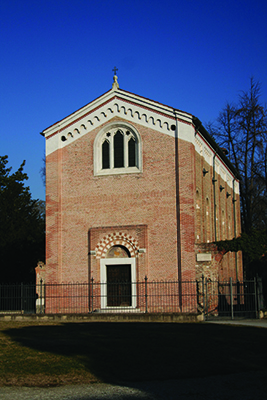
The chapel is referred to today as the Scrovegni Chapel or the Arena Chapel, harking back to its architectural roots. By building and decorating the chapel, Enrico was attempting to settle his debts with Heaven. He tries to right the scales, so to speak, in his relationship with God and book himself a place with the blessed.
The Last Judgement on the counter façade depicts Christ in a colourful mandorla and the flames of fire light the very hellish Hell on his left side. Below Christ’s feet is a cross and below the cross is Enrico himself, dressed in purple, the colour of penitence. He offers a model of his large chapel to haloed attendants. Behind him, bodies (the saved) are emerging from their tombs and will start their long-awaited ascent to the dizzy heights of Paradise. Cunning Enrico of course places himself, with certainty, on the winning side.
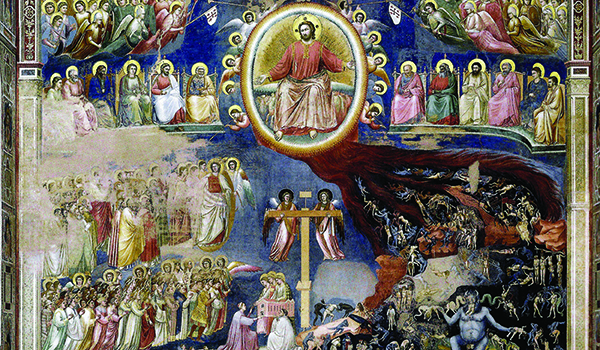
Enrico Scrovegni commissioned Giotto, the international painter from Florence, for the decoration in fresco of the walls and ceiling.
Giotto was in Padua at the time doing some work on ‘Il Santo’ (the saint), the nickname for the great Basilica of Sant’Antonio de Padova, and so Enrico took advantage of his timely sojourn in the city to secure him for his own chapel in 1303. There are no surviving documents relating specifically to this commission, however it is thought that the work took about two years.
The finish date is thought to be 1305 because in this year Enrico borrowed tapestries from St Mark’s Basilica for the chapel consecration. The walls are divided into separate scenes over three horizontal registers.
The top register tells the story of Mary’s parents, Joachim and Anne, and the early years of Mary. The middle register narrates the youth of Christ and his early ministry. Then begins the series of The Passion of Christ. The Arena Chapel is considered to be Giotto’s greatest achievement.
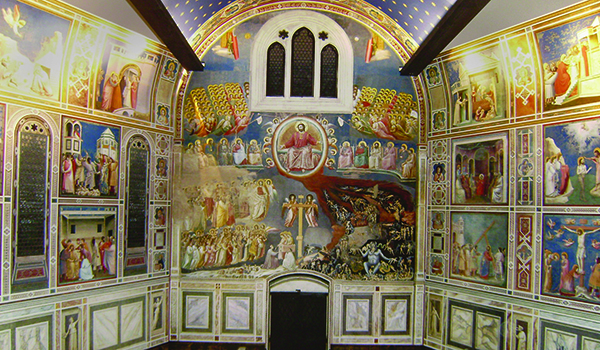
Giotto is the most important and most innovative painter in 14th-century Italian art. He is the single most influential painter for the 15th-century painters of the Renaissance. Already in his century it was said that he changed the language of painting from the Greek manner to the Latin manner.
I think that it is such a lovely way to describe his style: that he used a different language to the one that was in use at the time: he changed the vocabulary. By the Greek manner, they mean the symbolic representation of the icon in the Byzantine world.
By the Latin manner, it is the language of the ancients that is revived by Giotto. He shows the representation of human emotion, injects individuality once again in the people depicted and is interested in conveying a sense of realism (as opposed to symbolism). Giotto presents us with an event of a life story in every scene rather than an image representing an eternal idea.
Giotto’s work, which shows real emotion and real people, is the reflection of a new, flourishing, wealthy mercantile class and the bustling cities of Florence, Siena, Padua, Pisa and the like – of a new society which searches for a greater understanding of the world and a different spiritual connection with Heaven.
His work reflects the new Franciscan writings of the age encouraging a greater closeness with the human suffering of Christ with reflection on the humanity of the son of God.
Francis was the first to create a live representation of the nativity. This new atmosphere is conveyed in Giotto’s painting, which depicts only the essentials of the narrative, though every element depicted has a purpose and significance.
He shows the first tear in modern art history running down the cheek of a woman in the Massacre of the Innocents scene on the top register. He shows people in profile and, most innovatively, he depicts people with their backs to the viewer, which creates a whole new sense of pictorial space. This motif creates realistic space on the surface within which a real body can exist. He is the inventor of empirical perspective.
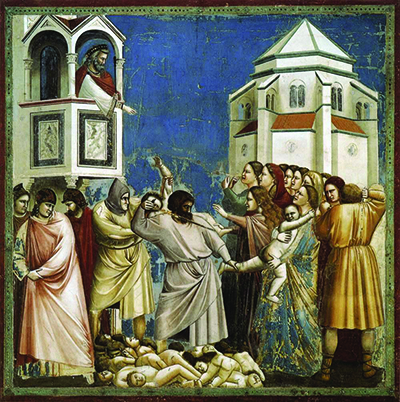
His Lamentation of Christ in the middle level is emblematic of Giotto’s style. The landscape is reduced to a barren hill slope behind the figures. The eye is guided down to the head of the dead Christ. His head is held by grief-stricken Mary, who props her knee up higher to be closer to his face.
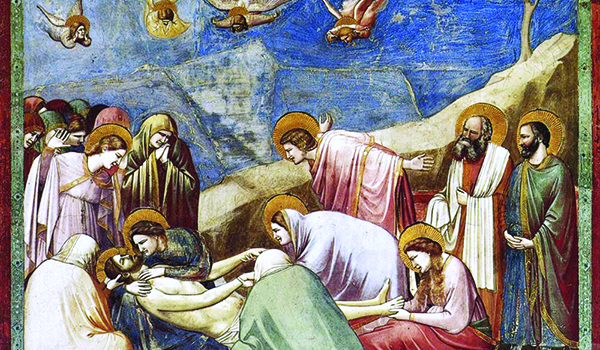
Giotto studied every detail of humankind from the interior psychology to the prosaic positions of the everyday, and it is these two elements that, combined, explain the greatness of Giotto and why his images are so powerful. John the Evangelist throws his arms back in desperation.
The women’s face below him intensely studying that of Christ’s is full of pain. The woman with her back to us nurses the head of Christ and stylistically rounds off the grouping around the dead body. The angels above are astounding in their novelty. They are so distraught that some of them are tearing at themselves.
This level of expression and thought given to the composition to maximise the communication of the drama transmitted in the organisation of space and intensity of gestures reveals Giotto to be the master of drama and the first Humanist artist.
About the writer:
Freya Middleton is a private tour guide and writer who lives in Florence, Tuscany. You can read her blog online or learn more about her tours at www.freyasflorence.com
